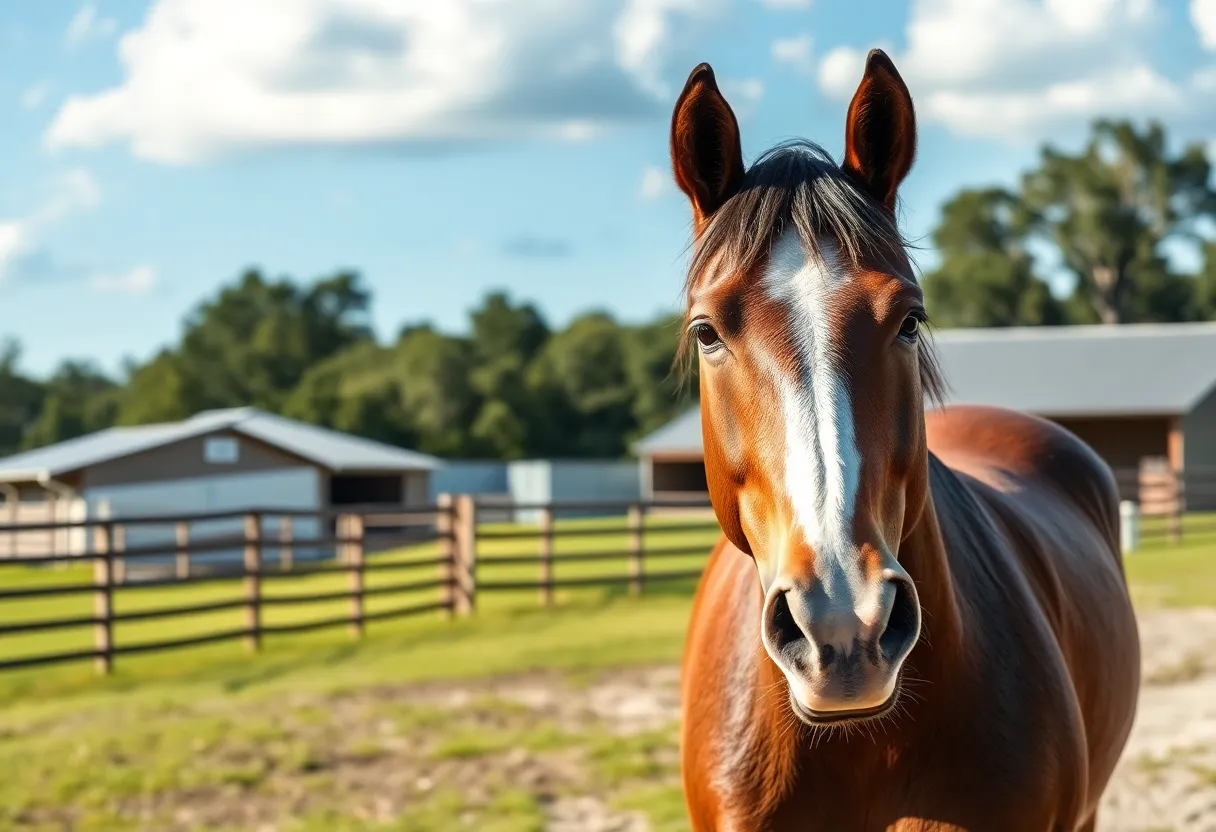News Summary
Florida’s thoroughbred breeding industry faces a significant decline, with a 60% drop in mares bred over the last decade. Legislative changes, specifically Senate Bill 408, threaten to decouple live racing from gambling activities, raising alarms among breeders and trainers. Concerns are growing as the state’s foal crop decreases dramatically, and related auction sales plummet. Despite attempts to support the industry through new legislation, the future of thoroughbred racing in Florida remains uncertain, leaving stakeholders worried about its cultural and economic impact.
Decline of Thoroughbred Breeding in Florida Raises Concerns
In the sunny land of Florida, a troubling trend is making waves in the thoroughbred horse industry. New data indicates that thoroughbred horse breeding in the state is on a serious downward spiral. As legislation moves forward that could change the landscape of horse racing, folks in the industry are scratching their heads, wondering what’s next for these majestic animals.
Legislation Looming
The hot topic on everyone’s lips is Senate Bill 408, which aims to decouple marketing live racing from slot machine and card room operations. This legislative move is stirring up concerns among breeders, trainers, and veterinarians who argue that separating live racing from lucrative gambling activities could deal a severe blow to an already struggling thoroughbred industry.
Senate Democratic Leader Jason Pizzo suggested it’s quite the pickle. The paradox here is that while horse racing used to be a big player in Florida’s economic scene, it now seems to need allied wagering activities to keep itself afloat. With declining numbers circulating, the conversation is more urgent than ever.
Staggering Statistics
Now for some eye-opening stats! According to the Jockey Club, Florida stallions have faced a staggering 60% decline in the number of mares bred over the last decade. That’s a drop from 3,057 mares in 2014 to a mere 1,316 in 2024! But wait, there’s more—Florida’s foal crop has decreased by a whopping 51% during the same timeframe, plummeting from 2,214 foals born in 2014 to only 1,089 by the end of 2023. To put it plainly, there’s simply not enough newborns to carry on the legacy of thoroughbred racing.
The North American foal crop is also seeing less representation from Florida, slipping from 6.4% in 2022 to 6% in 2023. Just about every indicator points towards a troubling trend: the number of registered foals in Florida dropped by 7.3% from 2022 to 2023. Meanwhile, the number of Florida-bred stallions has sunk down from 72 in 2023 to 60 in 2024—representing a nearly 17% reduction. To add a dash of context, that number is part of a staggering 76% decline since 2004, when 259 Florida-bred stallions roamed the land.
Declining Market and Racing Participation
The marketplace isn’t looking sunny either. Auction sales for Florida-bred thoroughbreds have nose-dived, spotlighting a concerning trend. Just ten weanlings were sold in 2024 compared to an astounding 434 in 2004. As if that’s not enough, the average price for these weanlings has also plunged by nearly 24% over the years.
Participation in racing has thinned out significantly as well. Florida-bred starters have seen a steep drop, decreasing from 10,331 in 2004 to a mere 3,273 in 2024. This decline raises an alarm about the future of horse racing in the state.
Various Perspectives on Decoupling
The debate is fierce between those in favor of decoupling and those against it. Opponents, including industry veterans, claim that decoupling could crush the breeding and racing industry that’s so integral to Florida’s culture and economy. They argue the live racing events provide essential support for breeders and trainers.
On the flip side, supporters of decoupling emphasize that it’s a necessary shift given the current realities facing Florida’s thoroughbred industry. Republican Rep. Adam Anderson, who supports the House bill, argues that change is crucial to address the ongoing decline.
Moving Forward
In light of the challenges, new legislation that was signed by the Governor has set permanent yearly distributions of $27.5 million to support horse breeding and racing. Amendments to the Senate and House bills aim to protect thoroughbred racing, requiring a three-year notice before any stoppage of live racing is enacted. The Senate amendment also suggests that there’ll need to be at least seven years of thoroughbred racing before any decoupling can happen. Feeling optimistic about the future is difficult, but the industry is gearing up for a fight to ensure that thoroughbred racing continues to be a vibrant part of Florida’s economy and culture.
With the Senate bill waiting for a hearing and the House bill awaiting action on the floor, all eyes are on how this complex saga will unfold. Stay tuned, thoroughbred enthusiasts! Florida’s horse racing world is at a crossroads, and the stakes have never been higher.
Deeper Dive: News & Info About This Topic
- Florida Politics: Industry Insights
- Florida Thoroughbred Breeders’ and Owners’ Association: Florida-Bred Incentives
- BloodHorse: Decoupling Impact
- Wikipedia: Thoroughbred
- Encyclopedia Britannica: Thoroughbred Horse







